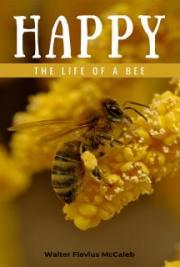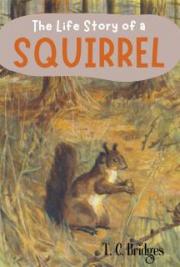NUTRITION AND FEEDING

In the feeding of pigs, the main objective is to produce piglets from breeding animals, and subsequently meat from these piglets, with the maximum efficiency and productivity.
Feeding represents about 80% of the total cost of producing pigs. Therefore use feeds efficiently and economically in order to make profit. Use cheaper, lower grade feed stuff and supplement with more nutritious feeds. Provide feed requirements according to the different categories of pigs and the condition e.g. piglets, weaners, growers, pregnant sows and sows, suckling piglets.
Fortunately, pigs can survive on a variety of feeds ranging from commercial feeds (very expensive option), root tubers to pastures with quite good performance with optimum supplementation. While feeding, you (the farmer) should achieve the basic nutrient requirements of the particular age group of the pig.
Before introduction of pigs into the rearing system (pigsty), you should mobilize large feed reserves to ensure uninterrupted feeding of the animals so that the intended objective is achieved.
Generally a pig has no definite time for feeding. Piglets are habitual nibblers and eats in small quantity throughout the day. However, pigs are fed twice or thrice a day with the following computed feed:
|
Age
|
Quantity
|
|
1-2 Months
|
0.5 kg per day
|
|
2-3 Months
|
1.0 kg per day
|
|
3-4 Months
|
1.25 kgs per day
|
|
4-5 Months
|
1.5 kgs per day
|
|
5-6 Months
|
2.0 kgs per day
|
|
Boar and Pregnant Gilt
|
2.5 kgs per day
|
But what is a feed?
A feed is food given to domestic animals in the course of animal husbandry.
Uses of Pig Feeds
 Growth: Mainly an increase in size of bone, muscle and skin cells.
Growth: Mainly an increase in size of bone, muscle and skin cells.
 Maintenance: Energy for normal animal activities and repair of worn body tissue.
Maintenance: Energy for normal animal activities and repair of worn body tissue.
 Reproduction (Gestation): Growth and development of unborn pigs, from mating to farrowing.
Reproduction (Gestation): Growth and development of unborn pigs, from mating to farrowing.
 Milk Production (Lactation): Producing milk requires a high-level feeding of quality feed.
Milk Production (Lactation): Producing milk requires a high-level feeding of quality feed.
 Fattening: Formation and deposition of fat tissue under the skin, around muscles and in the body cavity.
Fattening: Formation and deposition of fat tissue under the skin, around muscles and in the body cavity.
Basic Rules of Pig Nutrition
Nutrition and feeding provide an important tool for management manipulation in the control of disease. The quality of the feed, its methods of presentation and the amounts of feed provided are part of the disease prevention process.
Below are some of the nutrition rules you can adopt on the farm:
Rule 1: Outdoor pigs need more than just pasture to survive.
 While it is true that pigs love rooting in and eating pasture, they cannot survive on pasture alone. They need a balanced ration usually based on cereal grain. Pigs are monogastric (single stomach) animals and are inefficient digesters of fiber (only 50% efficiency).
While it is true that pigs love rooting in and eating pasture, they cannot survive on pasture alone. They need a balanced ration usually based on cereal grain. Pigs are monogastric (single stomach) animals and are inefficient digesters of fiber (only 50% efficiency).
 Diets based on pasture are high in fiber. Pasture quality can change quickly. Pigs unused to pasture diets can take 2 months to adjust. Most of this adjustment is due to changes in the size of the large intestine and changes to micro flora in the gut. The more fiber in the diet the lower the digestibility.
Diets based on pasture are high in fiber. Pasture quality can change quickly. Pigs unused to pasture diets can take 2 months to adjust. Most of this adjustment is due to changes in the size of the large intestine and changes to micro flora in the gut. The more fiber in the diet the lower the digestibility.
 Young pigs do not have the gut capacity to eat enough pasture to get their nutrient requirements for growth, health and well-being. Pasture should be 10% or less of their daily intake for best results. Mature dry sows may cope with 50% of their diet comprising of good quality pasture but they need a balanced ration as well. Lactating sows should be fed to appetite with a grain based ration.
Young pigs do not have the gut capacity to eat enough pasture to get their nutrient requirements for growth, health and well-being. Pasture should be 10% or less of their daily intake for best results. Mature dry sows may cope with 50% of their diet comprising of good quality pasture but they need a balanced ration as well. Lactating sows should be fed to appetite with a grain based ration.
 Pigs on a pasture based diet have a reduced dressing percentage due to the increased gut volume for fiber digestion.
Pigs on a pasture based diet have a reduced dressing percentage due to the increased gut volume for fiber digestion.
Rule 2: Cereal grains must be processed - cracked, rolled or soaked – for efficient digestion by the pig.
Pigs will eat whole grain but this will pass straight through and show in the manure. Grain that is processed is more easily digested by the pig and there is less feed wasted. The recommended particle size for pigs is 0.7mm or 700 microns.
Use of hammer mills or roller mills breaks the grain to smaller particle size and increases the surface area available to the digestive enzymes in the gut. Soaking softens the grain and it is broken to smaller particle size when the pig chews the grain. Soaking is inefficient for large numbers of pigs, and there is the added risk of mycotoxin development. (Mycotoxins are toxins produced by molds.)
Pelleted feed has a fine particle size suitable for easy digestion by the pig. However pellet size can vary so be sure the pellets are not too large for young pigs to eat. If you can see whole grains or parts of grains in the pig manure then you are wasting feed.
Rule 3: One diet does not suit all pigs – Match Feed to Need.
Pig feeds and diets are assessed on the amount of lysine and DE (digestible energy) that they provide for the pig. Piglets, weaners and growing pigs have higher lysine and energy requirements compared to mature pigs. First lactation gilts, older lactating sows and dry sows all have different lysine and energy requirements. Pigs housed outdoors may have additional energy requirements (up to 15% extra) depending on weather conditions and exercise.
Larger scale commercial piggeries will feed specific diets to their weaners, growers, finishers, gilts, dry sows and lactating sows – usually 6 different diets. Small scale piggeries with only a few sows are usually unable to be this specific. However there is benefit in targeting the pig groups that benefit most from matching feed to need. These groups are the weaners and growers and the lactating sows and gilts.
A small scale producer needs to consider the age at which the pigs are sold. If all pigs are sold as weaners then a lactating sow diet will suffice for all pigs, with a top dressing of milk powder as the creep feed for suckling pigs. If pigs are grown out to the porker/grower weight then introduction of a grower diet for the weaners and growers would benefit those pigs.
If you are using pelleted feed then you need to make sure the pellet size is suitable for all pigs in the group. Meal or mash is preferable but you need feeders or troughs to reduce waste. If feeding wet feeds then cleanliness is important as stale moist feed is a good substrate for molds and mycotoxins which can make pigs sick or worse cause their death.
Rule 4: Feed a balanced ration – consult a pig nutritionist for diet formulations
A balanced ration and diet formulation is part of the process of matching feed to need. Different feed ingredients contain different amounts of amino acids and energy and have differing digestibility so they may not be suitable for all age groups of pig. Some feed ingredients may have restrictions on amounts that can be included in a ration due to their effects on palatability, their digestibility, fiber content or cost. A pig nutritionist can provide you with a diet formulation that supplies a balanced ration for your pigs.
There are several companies that supply vitamin and mineral premixes, and most provide a feed formulation service. It is recommenced that you utilize this service. If you feed your pigs a balanced ration you enhance their health and well-being. Pigs that receive an inadequate diet are more susceptible to health and reproductive problems.
You can purchase ready mixed pig feed directly from quality feed mills. This is the easiest way to start when feeding pigs.
Consult a nutritionist as well as a vet if you have herd health or reproductive problems – these may be due to dietary deficiencies. Review your diets summer and winter or whenever the ingredients list or conditions change.
Rule 5: Water should be available at all times and readily accessible for all age groups.
 Water intake is correlated with feed intake and should be available at all times.
Water intake is correlated with feed intake and should be available at all times.
 Piglets start drinking water before they are weaned so water should be accessible to them as well as the sow. Lactating sows seek water at night as well as during the day even in cold weather.
Piglets start drinking water before they are weaned so water should be accessible to them as well as the sow. Lactating sows seek water at night as well as during the day even in cold weather.
 Water still needs to be available even if you are liquid feeding especially in hot weather as the liquid feed is not always available and pigs can still be thirsty.
Water still needs to be available even if you are liquid feeding especially in hot weather as the liquid feed is not always available and pigs can still be thirsty.
 Aim for a cool water supply 18-20°C. Supply lines should be buried or insulated particularly if they are black poly pipe outside in the full sun; otherwise the water is hot and undrinkable when it is most needed.
Aim for a cool water supply 18-20°C. Supply lines should be buried or insulated particularly if they are black poly pipe outside in the full sun; otherwise the water is hot and undrinkable when it is most needed.
 If using nipple drinkers match water pressure to age group – 0.5 liters/min for piglets and weaners, 1.0liters/min for growing pigs and dry sows and 2.0 liters/min for lactating sows.
If using nipple drinkers match water pressure to age group – 0.5 liters/min for piglets and weaners, 1.0liters/min for growing pigs and dry sows and 2.0 liters/min for lactating sows.
Rule 6: Do not feed prohibited substances (swill) to pigs.
You must not feed meat, meat products or anything that has been in contact with meat (such as table scraps or restaurant waste) to pigs. The use of Dry Stock Feed Meals based on meat, blood, bone, feathers or a combination of such products, is only allowed if the meal has been produced according to standards relating to Hygienic Rendering of Animal Products.
It is possible to keep pigs on a vegetarian diet but you are advised to consult with a pig nutritionist to develop a balanced ration.
Rule 7: Check for hazardous substances in feed – some weed seeds and some plants are poisonous to pigs.
Always ask for a vendor declaration with all feed deliveries.
Keep feed samples of all feed deliveries for 6 months. Label well and store them in a vermin free environment. Keep delivery dockets and batch numbers of all feed ingredients.
Do not feed „OFF' Feed to pigs – look for molds, moisture, heat, odor, excessive dust, odd color or unusual ingredients. Use mycotoxin inhibitors in pig feed to reduce effects of unseen mycotoxins. Mycotoxins are toxins produced by molds on feed. There are several types. Some can cause vomiting, some can cause reproductive problems such as abortions and some can cause death in pigs.
Be aware of the plants growing on your farm – some are toxic to pigs. Some will cause death in a short period of time after ingestion (for example the seeds of the White Cedar tree) while for others the effects can be more gradual (Patterson's Curse, Common Heliotrope, Bracken Fern).
Detailed Daily Feed Requirements
 Dry/pregnant Sows and Gilts: Dry sows and gilts give 2.5/kg day of sow and weaner meal. Give extra 1kg/day one week before serving gilts and sows and one week after service. Give lactating sows 2.5 kg/day of sow and weaner meal for maintenance and 0.25 kg/day extra for each piglet being suckled.
Dry/pregnant Sows and Gilts: Dry sows and gilts give 2.5/kg day of sow and weaner meal. Give extra 1kg/day one week before serving gilts and sows and one week after service. Give lactating sows 2.5 kg/day of sow and weaner meal for maintenance and 0.25 kg/day extra for each piglet being suckled.
 Boars: Give boars 2.0 kg/day. If the boar is regularly used give it 2.5 Kg.
Boars: Give boars 2.0 kg/day. If the boar is regularly used give it 2.5 Kg.
 Piglets: Give creep pellets i.e. 0.5 - 1.00 kg/day from day 7 up to weaning time (21 days) per piglet. The feed should be mixed with sow and weaner meal the last one week before weaning.
Piglets: Give creep pellets i.e. 0.5 - 1.00 kg/day from day 7 up to weaning time (21 days) per piglet. The feed should be mixed with sow and weaner meal the last one week before weaning.
 Feeding of Growing and Finishing pigs: - Pigs weaned at 3 - 5 weeks of 11 - 13 kg body weight should continue being fed on the starter diet until they reach 18 kg live weight. Pigs weaned at 7 weeks or older may be switched gradually to sow and weaner diet. For growing or finishing pigs all ration changes should be made gradually. If this is not possible the feeding level of the new diet should be low until the pigs become accustomed to it.
Feeding of Growing and Finishing pigs: - Pigs weaned at 3 - 5 weeks of 11 - 13 kg body weight should continue being fed on the starter diet until they reach 18 kg live weight. Pigs weaned at 7 weeks or older may be switched gradually to sow and weaner diet. For growing or finishing pigs all ration changes should be made gradually. If this is not possible the feeding level of the new diet should be low until the pigs become accustomed to it.
Where post-weaning scours are a major problem, restricted feeding during the first week after weaning may reduce the incidents of scours.
For treatment in case of an outbreak of scouring, medication through drinking water is preferable since sick pigs go off feed.
Traditional Pig Feeds
Feeds should meet the animal's needs for maintenance, growth and reproduction.
Good pig feed contains sufficient energy, protein, minerals and vitamins. Several feeds like maize bran, broken maize, wheat bran, millet rice bran, brewers waste, cassava meal, sweet potatoes, vegetable culls, molasses, fruit culls, sugar cane bagasse, bakery waste and forages are some of the traditional pig feeds that can be found in Uganda.
However, be careful not to use feeds from contaminated sources where you may introduce a disease like African swine fever into your herd. Also do not feed pigs with moldy feeds like spoilt bakery wastes because they are toxic.
Distillery waste is much appreciated in the traditional pig husbandry, especially for fattening pigs. It is advisable however, not to give this high valued feed to pregnant and lactating sows and to piglets and weaners because of the alcohol contents in the waste.
Below is a table of the most traditional foods fed to pigs.
|

|
Rice Bran: is very suitable for pig feeding. It contains 11% protein and can be used as the main ingredient. Rice bran can be mixed with other feeds to 30 - 45%. Rice bran can be kept no longer than 1 month because it can become moldy.
|
|

|
Broken Rice: is very suitable for pig feeding. It can be mixed with other feeds up to 15 - 20%. Broken rice contains about 8% protein.
|
|

|
Maize: is a very good animal feed. It contains up to 65% carbohydrates and 9% protein. It can be mixed and cooked with other feeds, but not more than 40% in the mix ration
|
|

|
Maize bran: Maize bran is a by-product of various maize processing industries, including starch and ethanol production, and the production of maize-based foods. While maize bran theoretically consists of the bran coating removed in the early stages of processing, the maize bran sold for livestock feeding is usually a mixture of the bran fraction and other by-products and is, therefore, a very loosely defined product of highly variable composition.
|
|

|
Soybeans: is a crop which has a high nutritional value and is very good for pig feeding. It contains 38% protein (very high).
It should be dried, milled or well-cooked in combination with other feedstuff like rice bran, broken rice and maize.
|
|

|
Wheat Bran: A by-product from the manufacture of flour, containing mainly the grain husks. It therefore has a high fiber and low energy value, but it is a useful source of phosphorous. It can also be a useful remedy for constipation in farrowing sows.
|
|

|
Root Crops: are being used for pig feeding, they can be mixed with other feeds up to around 10 - 20% (never more than 30%). First it should be peeled and washed and then sliced, dried and ground before use. It should not be fed to pigs as raw cassava with the skin, because of toxic substances. The sliced and dried cassava can be kept longer.
|
|

|
Fruits: Fruits damaged during transportation, storage and handling are used as supplementary feeds for pigs by boiling and mixing with other feeds such as rice bran, broken rice and maize. They can also be given fresh. Suitable fruits are: Banana, papaya, apple, pear, melons etc.
|
|

|
Vegetables: Vegetables damage during transportation, storage and handling are used as supplementary feeds for pigs by boiling and mixing with other feeds such as rice bran, broken rice and maize. They can also be given fresh. Suitable vegetables are: cabbage, lettuce, spinach, morning glory, sweet potato vine, cola-cassia (needs boiling), pumpkin, guards, water hyacinth etc.
|
|

|
Sweet potato vine and tubers: Surplus potatoes or those graded unsuitable for the human market can be utilized as pig feed. The fleshy tuber provides an excellent source of energy, protein, essential vitamins and minerals. The precise nutritional value will depend on many factors including variety, season, tuber size and yield level. The starch in the raw potato is resistant to the digestive enzymes of the pig, and much of it is fermented by the gut micro flora, resulting in reduced energy availability. Cooking the potato improves its energy value by 40% but it is not always economic because of the fuel costs involved. Cooking improves the palatability of potatoes.
|
|

|
Green Soya bean plant: A reach source of vegetable protein.
|
|

|
Pumpkin: Pumpkin is a good source of the vitamin B group, while a large proportion of these vitamins is lost during the preparation of the protein concentrate and isolates.
|
Traditional Feed Processing
Different feeds are mixed and boiled to make the pig feed more palatable. There are 3 types of traditional processing:
 Mixing all different feeds together (rice bran, broken rice, crushed maize and soya, dried legume leaves, etc.) in proportion and giving it directly to the pigs.
Mixing all different feeds together (rice bran, broken rice, crushed maize and soya, dried legume leaves, etc.) in proportion and giving it directly to the pigs.
 Cooking the different raw materials together to improve digestibility and to break- down toxins from some feeds as raw maize and soya grains, beans, kitchen waste, forage crops, etc.
Cooking the different raw materials together to improve digestibility and to break- down toxins from some feeds as raw maize and soya grains, beans, kitchen waste, forage crops, etc.
 Food Waste Feeding to Swine is also commonly known as Garbage Feeding or Swill. Food waste or garbage fed to swine must be cooked and sterilized properly.
Food Waste Feeding to Swine is also commonly known as Garbage Feeding or Swill. Food waste or garbage fed to swine must be cooked and sterilized properly.
Feeding Alcohol Distilling Residues
Local alcohol can be made from millet, rice, maize, sweet potato, banana, etc. Most popular for pig feeding is distillery wastes from millet. It should be mixed with other feeds such as rice bran and broken rice/maize grids. Distillers' residues can be fed to fattening pigs, but not to pregnant or lactating sows. The following mixing ratio is commonly used in combination with distillery waste; Rice bran/Wheat bran (2 kg), broken rice (1 kg), and Distillers' residues (5-10 kg) and other locally available agricultural by-products.
Utilization of sun-dried on-farm generated poultry litter as a feed resource for growing-finishing pigs
Poultry litter includes excreta, bedding (mainly wood shavings, coffee husks), wasted feed and feathers. Hence it represents a vast reservoir of cheap nutrient. Good management, including exclusion of dead birds/ other extraneous materials from the litter and appropriate processing prior to feeding, such as sun drying (sometimes using a solar drier) has been reported to prevent growth of microorganisms.
However, even in the face of the incidence of Avian Influenza, on-farm generated poultry litter in farms where integrated system is practiced, with no reported disease cases could be a potential cheap source of feedstuff for growing-finishing pigs. Poultry waste has been successfully used in some countries like Egypt.
The total bacterial count can be considerably lower in sun dried poultry waste compared to the oven dried waste. According to earlier resea

















 Mixing all different feeds together (rice bran, broken rice, crushed maize and soya, dried legume leaves, etc.) in proportion and giving it directly to the
Mixing all different feeds together (rice bran, broken rice, crushed maize and soya, dried legume leaves, etc.) in proportion and giving it directly to the


